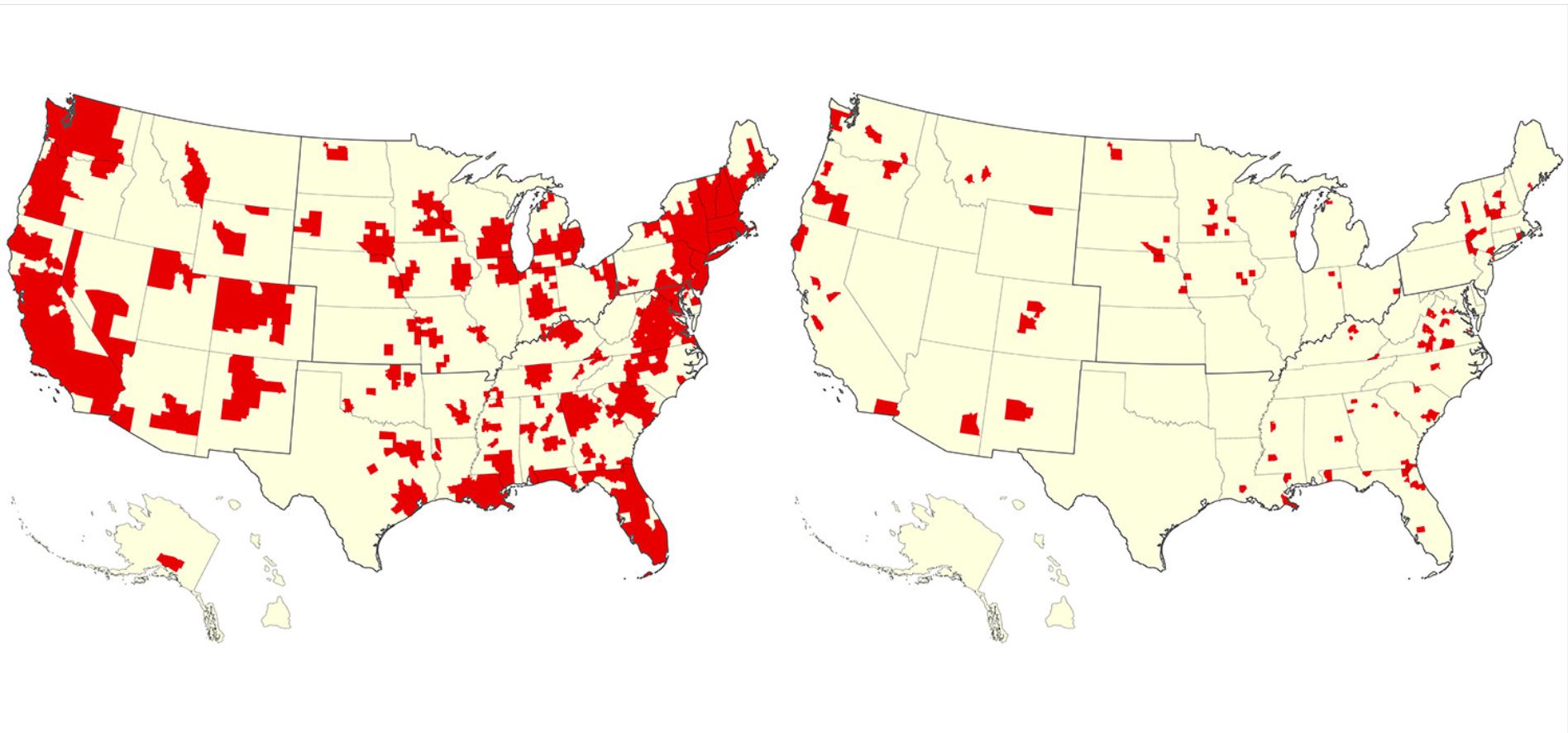These US counties are at risk of exceeding their hospital capacity during COVID-19 surge
The authors' projections are available to view in the form of an interactive map.

A new study identifies which U.S. counties are at highest risk of exceeding their hospital capacity during the next six weeks of the COVID-19 outbreak. Many of those counties are in the Northeast and the South.
The authors' projections are available to view in the form of an interactive map.
The study, from researchers at Columbia University Mailman School of Public Health, highlights just how important it will be to continue social distancing and hospital preparations in the coming weeks, which could save hundreds of thousands of lives, the authors said.
Related: 20 of the worst epidemics and pandemics in history
The study projects that actions to reduce contact between people, such as social distancing, travel restrictions and self-isolation of sick people, could prevent as many as 185,000 deaths in the Northeast, 33,000 deaths in the Midwest, 69,000 deaths in the South and 95,000 deaths in the West.
What's more, up to 100,000 deaths throughout the U.S. could be averted through aggressive strategies that expand the capacity of hospitals to care for critically ill patients, such as converting additional beds into intensive care unit (ICU) beds and using a single ventilator for multiple patients.
"Maintenance of both stringent social distancing measures and aggressive hospital preparations and response will be critical over the coming weeks to avoid overwhelming the healthcare system in many U.S. counties and greatly minimizing preventable deaths," the authors wrote in their paper, which has not yet been published in a peer-reviewed journal but is available as a pre-print on the Columbia University website.
Sign up for the Live Science daily newsletter now
Get the world’s most fascinating discoveries delivered straight to your inbox.
—Coronavirus in the US: Map & cases
—What are coronavirus symptoms?
—How deadly is the new coronavirus?
—How long does coronavirus last on surfaces?
—Is there a cure for COVID-19?
—How does coronavirus compare with seasonal flu?
—How does the coronavirus spread?
—Can people spread the coronavirus after they recover?
The researchers combined models of the growth of the COVID-19 epidemic in the U.S., along with the number of critical care beds in each U.S. county, as well as other measures, to predict where patient demand would exceed hospital capacity at some point between April 2 and May 13. The team looked at varying levels of social distancing and hospital preparations.
The researchers found that the Northeast and South r had the highest number of counties with patient demand exceeding hospital capacity.
The study also found that social distancing had the biggest impact: High levels of social distancing averted up to four times more deaths than were prevented by aggressive hospital preparation.
"The value of 'flattening the curve' … is potentially sizeable in terms of affording the U.S. medical system ... the necessary time to prepare and be able to handle a manageable throughput volume of severely ill COVID-19 cases," they wrote.
"We hope that these analyses and the online mapping tool are useful for COVID-19 response planning and implementation and reinforce the critical importance of social distancing," study co-author Andrew Rundle, an associate professor of epidemiology at Columbia University, said in a statement.
The authors note their study had some limitations. Their model did not account for potential shortages of medical staff who become infected with COVID-19, or deaths from other illnesses that hospitals may not be able to adequately address during the COVID-19 pandemic, they said.
- The 12 deadliest viruses on Earth
- 11 ways processed food is different from real food
- 20 of the worst epidemics and pandemics in history
Originally published on Live Science.
OFFER: Save 45% on 'How It Works' 'All About Space' and 'All About History'!
For a limited time, you can take out a digital subscription to any of our best-selling science magazines for just $2.38 per month, or 45% off the standard price for the first three months.

Rachael is a Live Science contributor, and was a former channel editor and senior writer for Live Science between 2010 and 2022. She has a master's degree in journalism from New York University's Science, Health and Environmental Reporting Program. She also holds a B.S. in molecular biology and an M.S. in biology from the University of California, San Diego. Her work has appeared in Scienceline, The Washington Post and Scientific American.










